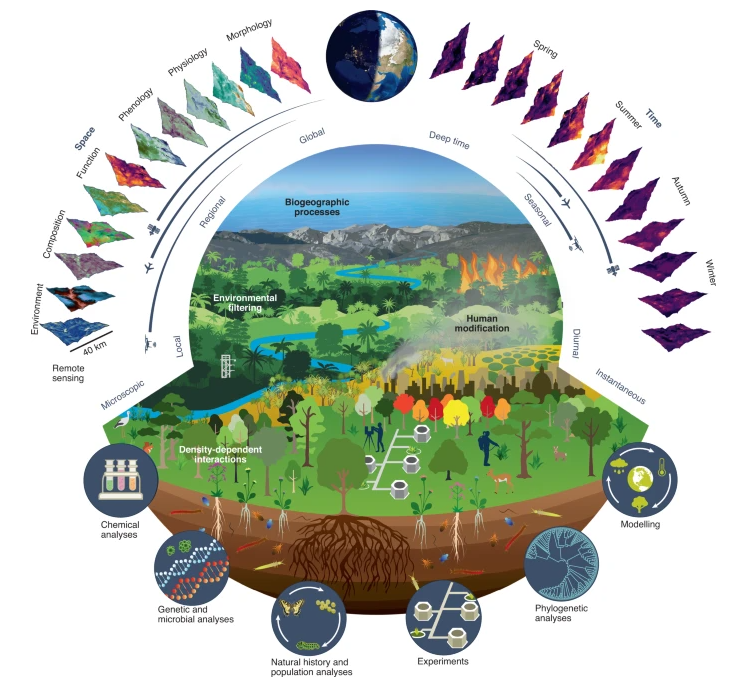GEOG Professor Co-Authors New Paper Calling for an Integrative Approach to Remote Sensing, Biodiversity Conservation
In a new Nature Ecology and Evolution perspective paper co-authored by George Hurtt, a professor in the Department of Geographical Sciences, experts argue that pairing remote sensing—which involves the collection of aerial imagery and other data from instruments such as drones, planes, and satellites—with on-the-ground observations and other biodiversity knowledge can provide a powerful framework for understanding, monitoring, and protecting biodiversity.
The paper specifically addresses 2050 targets set by the international Convention on Biodiversity, including reducing the rate of extinction tenfold, reducing the risk of extinction by 50%, and maintaining at least 90% of genetic diversity within all species. It also discusses the challenges associated with effectively addressing those targets, plus the ways that they can be overcome—solutions largely drawn from the experts’ participation in the February 2020 Inaugural World Biodiversity Forum held in Davos, Switzerland.
“While remote sensing can contribute in fundamental ways to monitoring biodiversity change, it cannot meet the monitoring needs for the goals and milestones of the Convention on Biodiversity post-2020 framework,” said lead author Jeannine Cavender-Bares, a Distinguished McKnight University Professor of ecology, evolution and behavior at the University of Minnesota.
Echoing Cavender-Bares’ thoughts, Hurtt said, “Many important aspects of biodiversity are not directly observable through remote sensors alone. From genetics, to on-the-ground calibration and validation, to socioeconomic considerations, to future dynamics, understanding requires integration across a broad set of approaches.”

It also requires global collaboration amongst scientists, organizations, and communities, the paper’s authors note. Regarding the latter, the experts call for greater consideration of the knowledge, needs and perspectives of Indigenous Peoples, who manage a substantial fraction of protected lands globally.
Fortunately, collaborative models already exist, the authors citing the Group on Earth Observations Biodiversity Observation Network (GEO BON) as an example of what this work can look like.
“Protecting biodiversity is one of society's grand challenges,” said Hurtt. “Scientists from multiple disciplines and diverse technical expertises, policymakers, and stakeholders need to be involved and coordinated. This needs to be an all-hands effort.”
For more information and to read the full article, click here. Main photo provided by iStock.
Published on Fri, 03/25/2022 - 11:57


